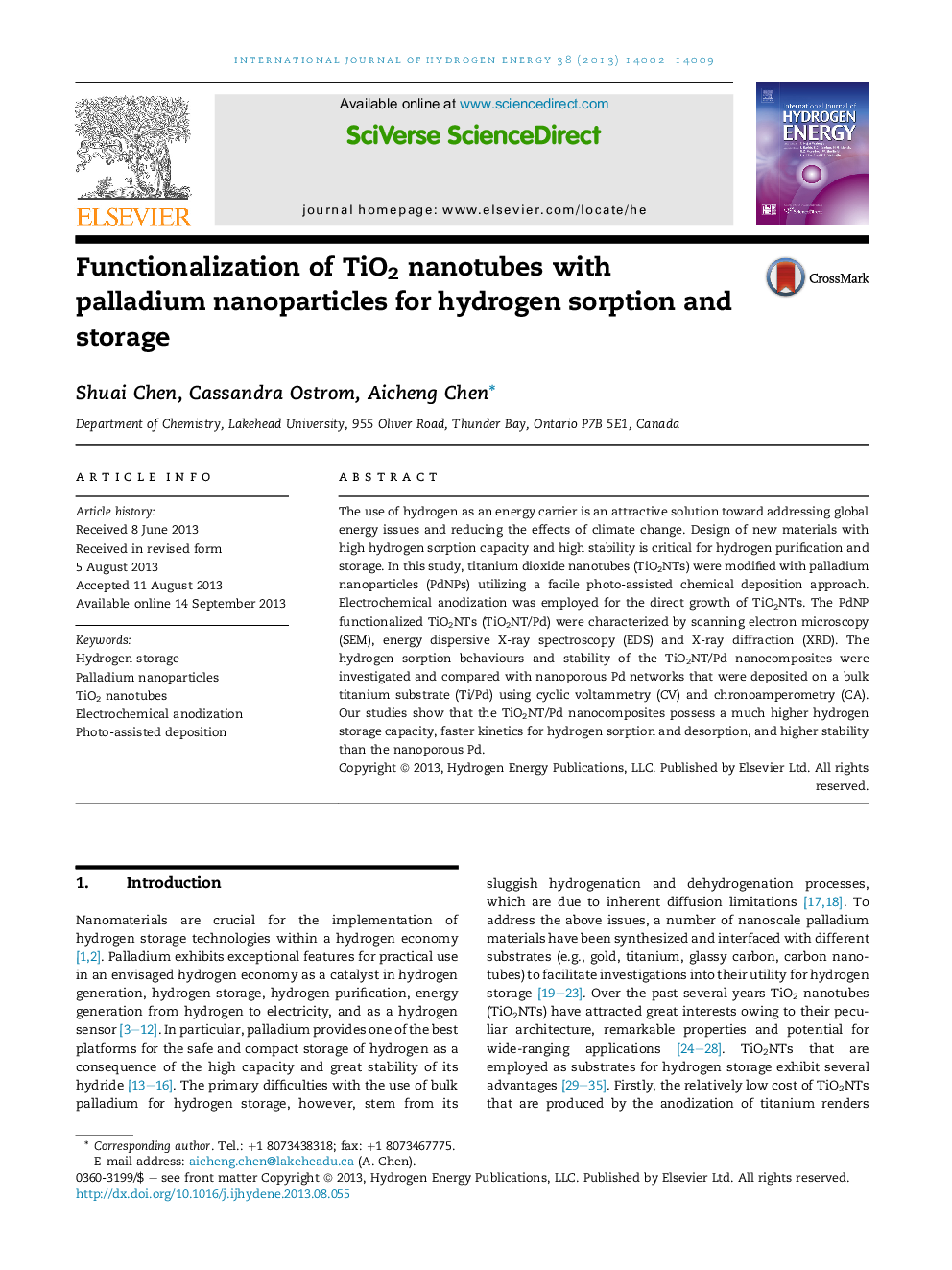| Article ID | Journal | Published Year | Pages | File Type |
|---|---|---|---|---|
| 1273070 | International Journal of Hydrogen Energy | 2013 | 8 Pages |
•Direct growth of TiO2 nanotubes (TiO2NT).•Modification of TiO2 nanotubes with Pd nanoparticles.•The TiO2NT/Pd nanocomposites possess high capacity and fast kinetics for hydrogen sorption.•Significant improvement of the stability of the Pd nanoparticles for hydrogen uptake and release.
The use of hydrogen as an energy carrier is an attractive solution toward addressing global energy issues and reducing the effects of climate change. Design of new materials with high hydrogen sorption capacity and high stability is critical for hydrogen purification and storage. In this study, titanium dioxide nanotubes (TiO2NTs) were modified with palladium nanoparticles (PdNPs) utilizing a facile photo-assisted chemical deposition approach. Electrochemical anodization was employed for the direct growth of TiO2NTs. The PdNP functionalized TiO2NTs (TiO2NT/Pd) were characterized by scanning electron microscopy (SEM), energy dispersive X-ray spectroscopy (EDS) and X-ray diffraction (XRD). The hydrogen sorption behaviours and stability of the TiO2NT/Pd nanocomposites were investigated and compared with nanoporous Pd networks that were deposited on a bulk titanium substrate (Ti/Pd) using cyclic voltammetry (CV) and chronoamperometry (CA). Our studies show that the TiO2NT/Pd nanocomposites possess a much higher hydrogen storage capacity, faster kinetics for hydrogen sorption and desorption, and higher stability than the nanoporous Pd.
Graphical abstractFigure optionsDownload full-size imageDownload as PowerPoint slide
